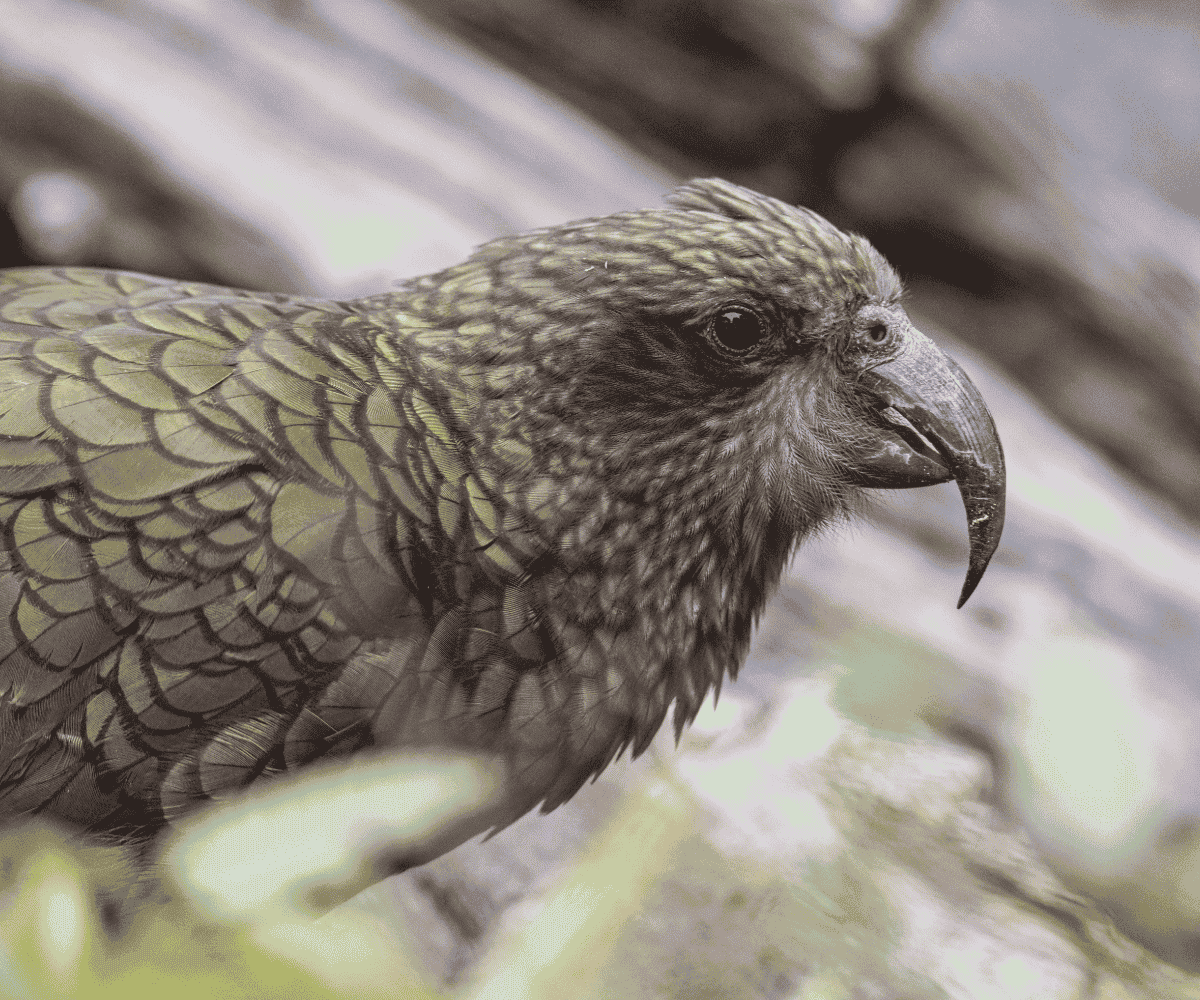Upon entering Cannupa Hanska Luger’s new exhibition, Dripping Earth at the Joslyn Art Museum, visitors find themselves, in a sense, underwater. Frames of bull boats sail overhead, referencing the small vessels that some Plains tribes historically used and orienting us within the context of the Joslyn’s location in Omaha along the Missouri River, the museum’s art collection, and Luger’s Mandan, Hidatsa, Arikara, and Lakota lineage.
Luger is known for his interdisciplinary explorations of his Northern Plains ancestry through clay, sculpture, performance, textiles, video, and more. For Dripping Earth, the artist took inspiration from a source with a close connection to both the Joslyn’s holdings and his own observations of art in his youth: the work of Swiss artist Karl Bodmer (1809–1893).

Between 1832 and 1834, Bodmer accompanied German naturalist Prince Maximilian of Wied on a North American expedition. Bodmer served as official documentarian, visually detailing the landscapes and people they encountered in numerous drawings and watercolors, many of which were later reproduced in Europe as lithographs. His portraits, which often emphasize ceremonial regalia, are a valuable record of Indigenous American tribal identity during this time.
Drawn to the nature of artifacts—how, for instance, Bodmer’s work can become an artifact of an artifact within the context of printmaking and reproductions—Luger considers how narratives are both conveyed and received. When Bodmer’s paintings were translated into lithographs in the 19th century, the printmakers took liberties with “correcting” some of what they viewed as mistakes or incompletions, changing anatomical anomalies or missing details. But in some cases, these corrections weren’t actually a reflection of reality, which the original watercolors reveal.
Luger is interested in how, over time, what is set into print becomes fixed, sometimes misconstrued, and inflexible. On the other hand, oral traditions like those of Northern Plains tribes are always evolving. For Dripping Earth, the artist focuses on this fluidity within the broader context of how American history is told.
“As a Native person growing up in North America, you go to school, you learn the history of the country, and you have a contrary story,” the artist said during an opening talk for Dripping Earth. His ongoing series Future Ancestral Technologies is a way of collapsing time—of bringing both the past and the future together in a way that addresses how Indigenous American material and visual culture has been shown in museums—as something ancient, primitive, and dark, when in fact it is ever-present and always evolving.

For this show, Luger scaled up, making some of his largest work to date. A monumental figure of steel and black clay looms over a number of ceramic vessels, carved wooden objects, and multi-media installations. A socially engaged work comprising steel poles with handmade clay beads also evokes a giant, three-dimensional abacus in the shape of a buffalo, illustrating data of wild buffalo returning to the plains. A few workshops facilitated by the museum invite visitors to create their own clay beads, which are then added to the sculpture to complete the animal’s form over time.
Central to Dripping Earth are a number of dancers sporting crocheted fabrics, padded gloves, and headdresses evocative of bison. These comprise Luger’s Midéegaadi series, the title of which is derived from the Hidatsa word for buffalo. A new group of limited-run prints combine these colorful figures—complete with Ben-Day dots that nod to the act of printmaking itself—with landscapes Bodmer sketched around the Missouri River region.
Interestingly, although Bodmer made landscape paintings, too, the backgrounds of his portraits are typically left blank. Luger delves into how most 19th-century landscape painting of so-called “virgin territory” simply left out the presence of the Indigenous people who already lived there. “Oh, but we were there!” Luger says. Bodmer’s paintings are almost like the landscapes in reverse, with emphasis only on people. For a new series of Midéegaadi prints, Luger incorporates Bodmer’s landscapes into the background.
Notably, many of the landforms the Swiss artist chronicled are now submerged in the Missouri River following the construction of major dams. But Luger considers this to be a part of a bigger story, in which these land forms—created by the river—weren’t “lost” but instead reclaimed by it. Which brings us again to how we approach Luger’s show, as though moving through a timeless, watery realm representative of the past, present, and future all at once—a speculative future that brims with the past.

Luger’s Midéegaadi dancers have made a number of appearances throughout 2025, including a large-scale installation for Times Square’s nightly Midnight Moment public art program. The video work took over more than 90 giant LED screens in the Manhattan intersection throughout the month of April, running for three minutes starting at 11:57 p.m.
Last month, one character called “Midéegaadi – Fire” also debuted in an unsanctioned digital group exhibition called ENCODED in the Metropolitan Museum of Art’s American Wing, during which the figure danced across Thomas Cole’s 1836–37 painting “View on the Catskills – Early Autumn” in an augmented reality performance.
Dripping Earth continues through March 8, 2026, in Omaha. And ENCODED runs through December 21 in New York City. See more on the artist’s website and Instagram.


















